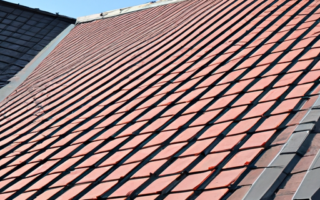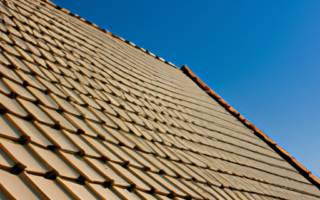Introduction to Roof Construction Techniques and Materials: A Comprehensive Guide
Introduction to Roof Construction Techniques and Materials: A Comprehensive Guide
Roof construction is a critical aspect of building architecture. Whether you are constructing a new building or renovating an existing one, understanding the various techniques and materials used in roof construction is crucial. This comprehensive guide will provide you with an introduction to roof construction techniques and materials so that you can make informed decisions for your construction projects.
One of the first considerations in roof construction is the type of roof you want to build. There are several popular roof styles, including flat roofs, gable roofs, hip roofs, and mansard roofs, each with its unique construction requirements. The choice of roof style depends on factors such as the architectural design, climate, and personal preference.
Once the roof style is determined, selecting the right roofing materials is the next step. The most common roofing materials include asphalt shingles, metal roofing, slate, clay tiles, and wood shakes. Each material has its advantages and disadvantages in terms of cost, durability, and aesthetics. Consider factors such as weather resistance, maintenance requirements, and energy efficiency when choosing roofing materials.
Roof construction techniques vary depending on the roof style and materials used. For example, flat roofs often require the installation of a waterproofing membrane, while gable roofs involve constructing the triangular-shaped gable ends. Understanding these techniques is crucial for ensuring a structurally sound and long-lasting roof.
In recent years, green and sustainable roof construction techniques have gained popularity. These techniques focus on environmentally friendly practices such as using recycled materials, installing green roofs with vegetation, and incorporating solar panels for energy generation. Green roofs offer benefits like improved insulation, reduced stormwater runoff, and enhanced biodiversity.
When it comes to roof construction, safety should always be a top priority. It is essential to follow safety guidelines and regulations, especially when working at heights. Adequate fall protection systems, training, and regular inspections are necessary to prevent accidents and ensure the well-being of workers.
In conclusion, roof construction techniques and materials play a vital role in the overall design and functionality of a building. By understanding the different roof styles, materials, and construction techniques, you can make well-informed decisions that align with your project goals. Whether you prioritize durability, aesthetics, sustainability, or cost-efficiency, there are various options available to meet your specific requirements. Stay tuned for the subsequent chapters of this ultimate guide, where we will delve deeper into each aspect of roof construction techniques and materials.
Exploring Different Types of Roofing Materials: Pros and Cons
When it comes to roof construction, choosing the right roofing materials is crucial. Different types of roofing materials offer various benefits and drawbacks, depending on factors such as climate, budget, and aesthetic preferences. In this section, we will explore different types of roofing materials, their pros, and cons, helping you make an informed decision for your roof construction project.
1. Asphalt Shingles
Asphalt shingles are one of the most common roofing materials due to their affordability and ease of installation. They are available in a wide range of colors and styles, making them versatile for various architectural designs. However, asphalt shingles have a relatively shorter lifespan compared to other materials, typically around 20-30 years. They may also be prone to damage in extreme weather conditions.
2. Metal Roofing
Metal roofing has gained popularity in recent years due to its durability and longevity. It can withstand extreme weather conditions, including strong winds and heavy precipitation. Metal roofs are also energy-efficient, as they reflect solar heat and help reduce cooling costs during hot summer months. However, metal roofing can be more expensive than other materials, and the installation process requires expertise to ensure a proper fit and prevent leaks.
3. Clay or Concrete Tiles
Clay or concrete tiles are known for their distinctive appearance and long lifespan. They offer excellent durability and can resist fire, insects, and rot. Another advantage is their superior insulation properties, keeping homes cooler in hot climates. However, clay or concrete tiles are heavier compared to other materials, which may require additional support during installation. They can also be more expensive, and some styles may be prone to cracking under extreme temperature changes.
4. Wood Shingles or Shakes
Wood shingles or shakes add a rustic and natural charm to a home. They offer good insulation and are environmentally friendly. However, wood shingles require regular maintenance and may be susceptible to rot, insects, and fire. They also have a shorter lifespan compared to other materials unless properly cared for and treated.
5. Slate Roofing
Slate roofing provides a classic and elegant look to any home. It is incredibly durable and can last for a century or more when properly installed and maintained. Slate is also fire-resistant, environmentally friendly, and offers good insulation. However, the high cost of materials and the need for highly skilled professionals for installation and repairs make it one of the most expensive roofing options available.
Choosing the right roofing material depends on various factors, including your budget, climate, and desired aesthetics. By weighing the pros and cons of each material, you can find the roofing solution that best fits your needs and ensures a durable and visually appealing roof for years to come.
Roof Construction Techniques: From Framing to Waterproofing
Roof construction is a crucial aspect of any building project, as it not only protects the structure from the elements but also enhances its aesthetic appeal. Various techniques and materials are used in roof construction, ranging from framing to waterproofing, all of which contribute to the durability and functionality of the roof. In this guide, we will explore the different roof construction techniques and materials, highlighting their key features and benefits.
Framing
The framing of a roof forms the basic structure onto which the other roofing components are installed. Common roof framing techniques include truss systems and stick framing. Truss systems consist of engineered roof trusses that are pre-fabricated and assembled on-site. They offer a cost-effective and time-efficient solution as they can be quickly installed. On the other hand, stick framing involves the assembly of rafters, ridge boards, and ceiling joists on-site. This traditional technique provides more flexibility in design and is often used for complex roof shapes. Both methods have their advantages and should be chosen based on the specific requirements of the project.
Roof Decking
Roof decking refers to the layer of material that covers the roof framing and supports the roof covering. Common materials for roof decking include plywood and oriented strand board (OSB). Plywood is a durable and versatile option that offers excellent strength and dimensional stability. OSB, made from compressed wood strands, is an economical alternative that can withstand loads and provide a solid base for the roof covering. The choice between plywood and OSB depends on factors such as budget, climate conditions, and the type of roof covering planned.
Roof Covering
The roof covering serves as the protective layer that shields the roof from external elements such as rain, snow, and UV radiation. There are several roof covering materials available, each with its unique features and benefits. Common options include asphalt shingles, metal roofing, clay tiles, and concrete tiles. Asphalt shingles, made from fiberglass and asphalt, are popular due to their affordability and easy installation. Metal roofing provides durability and is available in a variety of styles, while clay tiles offer a timeless and elegant look. Concrete tiles are known for their longevity and resistance to fire and extreme weather conditions. Selecting the appropriate roof covering material involves considering factors such as aesthetics, climate, durability, and maintenance requirements.
Waterproofing
Waterproofing is a critical aspect of roof construction, as it prevents water infiltration and protects the building from moisture-related issues such as rot and mold. The waterproofing layer is typically applied beneath the roof covering. One commonly used method is the installation of an underlayment, which acts as a moisture barrier. Synthetic materials like synthetic underlayment or self-adhering membranes are gaining popularity due to their superior waterproofing capabilities. Proper flashing installation around roof penetrations, such as vents and chimneys, is also crucial for preventing leaks. Regular inspections and maintenance are essential to ensure the ongoing effectiveness of the waterproofing system.
In conclusion, roof construction involves various techniques and materials, each playing a significant role in the overall performance of the roof. From framing to waterproofing, attention to detail and proper selection of materials are key to ensuring a durable and well-functioning roof. By considering factors such as budget, climate conditions, and aesthetics, builders and homeowners can make informed decisions regarding roof construction that will serve them well in the long run.
Factors to Consider When Choosing Roofing Materials for Your Project
When it comes to constructing a roof, choosing the right materials is crucial. The type of roofing materials you select will not only impact the aesthetic appeal of your project but also its durability, energy efficiency, and overall cost. With so many options available in the market today, it can be overwhelming to make a decision. That’s why understanding the factors to consider when choosing roofing materials is essential.
One of the most important factors to consider is the climate in which your building is located. Different roofing materials have varying tolerances to extreme temperatures, wind, rain, snow, and UV radiation. For example, in areas with high heat, it is recommended to choose roofing materials that have good thermal insulation properties to keep the building cool and reduce energy costs. On the other hand, in regions with heavy snowfall, materials with high snow load ratings are crucial to prevent the roof from collapsing.
Another factor to consider is the slope or pitch of your roof. Certain roofing materials are better suited for particular roof slopes. For instance, shingles are a popular choice for steep-sloped roofs, while flat or low-sloped roofs may require materials such as single-ply membranes or modified bitumen. The slope also plays a role in water drainage, which affects the lifespan of the materials and the overall health of the roof structure.
Your budget is another important factor when choosing roofing materials. Different materials have varying costs, and some may require additional expenses for installation, maintenance, or repairs. It’s essential to find a balance between your budget and the desired quality and longevity of the materials. Consulting with roofing professionals can help you navigate the various options within your price range.
Additionally, considering the architectural style of your building is crucial. Some roofing materials complement specific architectural styles, adding to the overall visual appeal and value of the project. It’s important to choose materials that harmonize with the design elements and the overall theme of the structure.
Lastly, the durability and lifespan of the materials are factors to take into account. Some materials, like metal or slate, have longer lifespans compared to others, like asphalt shingles. While the initial cost may be higher for more durable materials, they can provide significant cost savings in the long run due to reduced maintenance and replacement needs.
Overall, choosing the right roofing materials for your project requires careful consideration of factors such as climate, roof slope, budget, architectural style, and durability. By understanding these factors and consulting with professionals, you can ensure that your roof construction is a success, providing protection and visual appeal for years to come.



